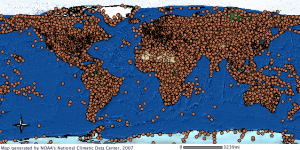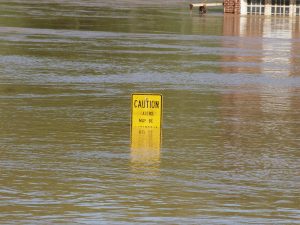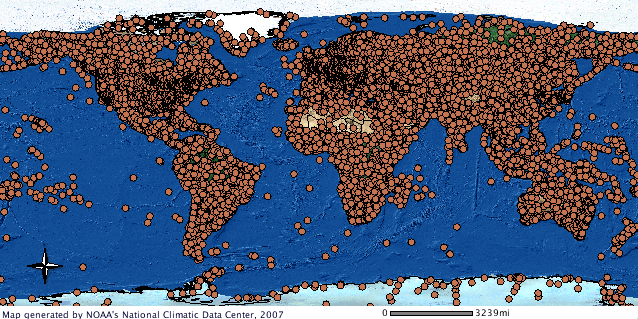While average temperatures gradually warm in most parts of the world, resulting in increasingly frequent and intense rainstorms, human expansion and development continue to disrupt the natural landscape’s ability to manage stormwater runoff. According to the first global analysis of how these trends already have affected rates of both precipitation and runoff generation, existing climate predictions may underestimate how today’s land-use decisions could influence tomorrow’s flash floods.
Developing land makes for a wetter world

To administer the first global analysis of how temperatures, rainfall rates, and runoff generation rates already have changed due to global warming and human land-use decisions, researchers relied on nearly 9 decades of daily environmental measurements. The U.S. National Oceanic and Atmospheric Administration (NOAA) and the German Federal Institute of Hydrology offer data from its repositories to the public, providing measurements from as many as 27,000 stations around the world. Photo courtesy NOAA
To examine the relationship between average global temperatures and wetter conditions, researchers from Columbia University (New York) and Wuhan University (China) pored over nearly 90 years of data points from global repositories managed by the U.S. National Oceanic and Atmospheric Administration and the German Federal Institute of Hydrology.
Together, the two repositories provide daily measurements of precipitation, wind speed, near-surface air temperatures, and dew point temperatures from as many as 27,000 measuring stations. The researchers focused on how averages for these factors changed across space and time, covering more than 100 countries from 1929 to 2017.
Many studies that estimate how global warming may affect extreme precipitation use a common model, which claims that the atmosphere can hold about 7% more moisture for every 1°C change in average temperatures. Based on rainfall patterns, the researchers found that most parts of the world either met or fell short of the model’s estimates. However, the study found most regions generated far more runoff than the expected average, indicating that manmade modifications to the planet’s surface make infiltration more difficult.
More so than climate change, the way humans manage land and water affects surface conditions and how stormwater behaves in response to those changes. For this reason, the researchers write that it is important to consider runoff when municipalities plan for flooding resilience.
“We were trying to find the physical mechanisms behind why precipitation and runoff extremes are increasing all over the globe,” said Jiabo Yin, lead author of the study. “We know that precipitation and runoff extremes will significantly intensify in the future, and we need to modify our infrastructures accordingly.”
Your results may vary
Importantly, results of the analysis were not “one-size-fits-all” for the world’s diverse array of climates. The researchers describe three main patterns that cover findings from every study region:
- rainfall and runoff generation rates increase as temperatures rise, indicating regions that are becoming more tropical;
- rainfall and runoff generation rates decrease as temperatures rise, in regions that are becoming drier; or
- rates increase with temperatures up to a “tipping point”, beyond which rates decrease as temperatures rise.

Researchers with Columbia University (New York) and Wuhan University (China) found that runoff generation rates, which are understudied, are generally higher than precipitation rates. The finding suggests that the combination of hotter climates and greater runoff volumes can result in flash floods without proper stormwater management measures in place. Photo courtesy PublicDomainPictures/Pixabay
Average temperatures rose in nearly every study area besides the midwestern U.S. and northwestern Europe, outliers that previous studies have linked to the influence of intensive farming in the regions. Likewise, while Russia recorded increases in average temperatures, rainfall rates have decreased dramatically as weakening ocean winds carry less moisture into the atmosphere, according to the study.
High-latitude regions — such as northern Europe, western Asia, and southern Australia — were most likely to exhibit a positive correlation between temperatures and wet weather. Tropical regions, including southeast Asia, India, and Central America, often sported negative correlations. Regions with a “tipping point” included mid-latitude areas such as the U.S., southern Europe, and eastern Asia.
With these findings in mind, the hope is that municipal planners will pay more attention to how the combination of higher temperatures, more frequent rainstorms, and greater runoff volumes can result in disaster if stormwater cannot infiltrate the surface once it falls, says Columbia environmental engineering professor and study co-author Pierre Gentine.
“Our findings can help provide scientific guidance for infrastructure and ecosystem resilience planning and could help formulate strategies for tackling climate change.”
Read the open-access study in Nature Communications.






